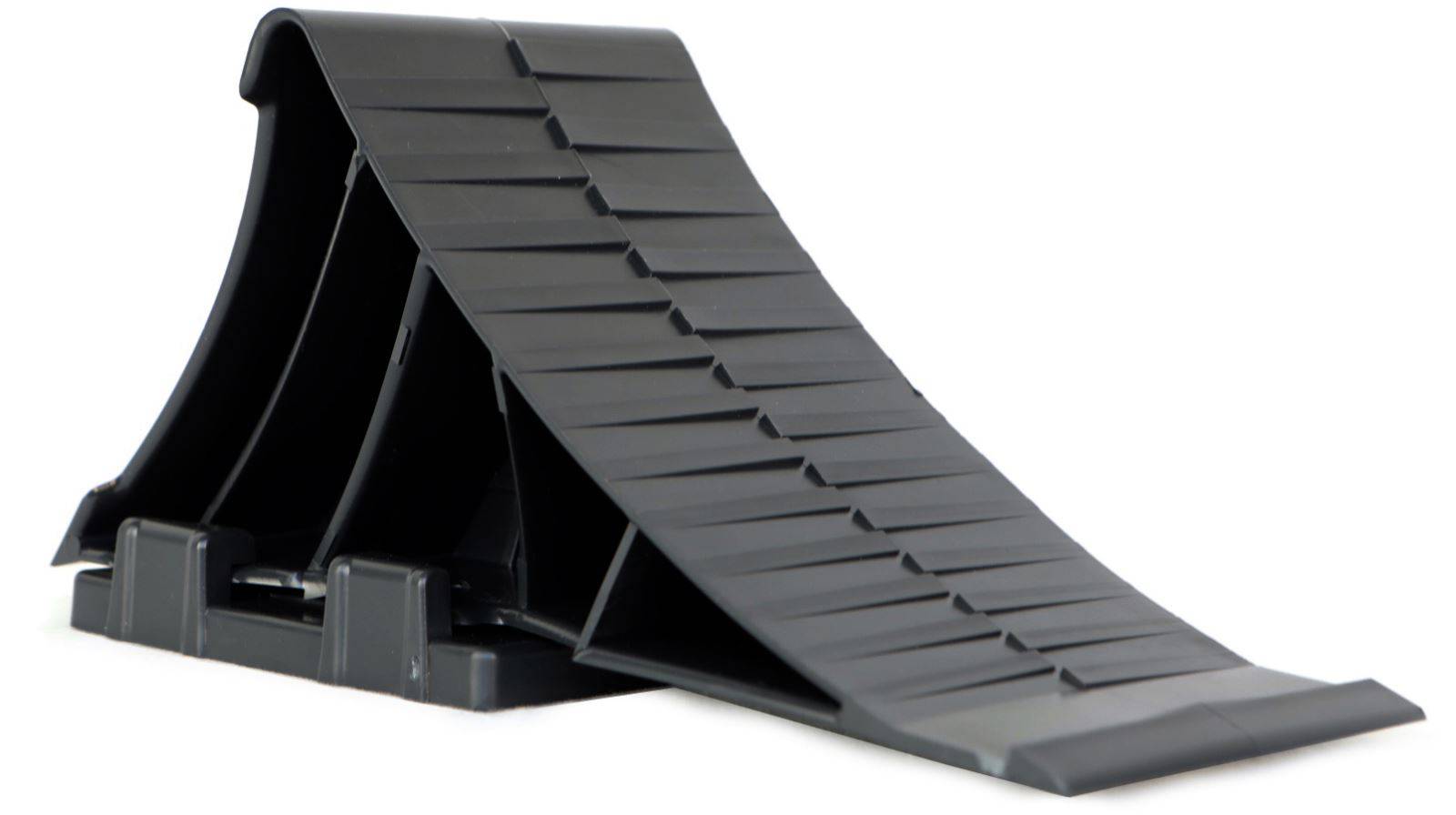By working with our strategic partner LAGO, we are excited to announce that we now offer the Mini SOPEO Wheel Chock for trucks, trailers, and other vehicles. Part of our Vehicle Safety Equipment range, this solid and lightweight product is designed to improve safety for trailers and reduce the risk of damage to vehicles.

What is a wheel chock?
Wheel chocks are typically a wedge of sturdy material that is placed beneath the wheel of the vehicle to prevent any accidental movement. These are often used in tandem with the user applying the vehicle brakes, as the brakes alone are not always sufficient to prevent unwanted movement.
Placing a wheel chock behind the wheel supports the vehicle when in a parked position, often when parked on a hill, or during loading/unloading a vehicle. Wheel chocks are available in a range of materials and sizes and can be used across a wide range of vehicles.
When is a wheel chock required?
Mandated under ADR rules, vehicles transporting dangerous goods must follow ADR regulations by carrying at least one wheel chock for use when loading/unloading and parking.
Although there is no legal requirement in the UK for wheel chocks on other types of vehicles, the HSE recommends a minimum of two wheels chocks to work effectively. It is vital that vehicles are immobilised properly, making wheel chocks essential for every vehicle.
How to choose the right wheel chock
To select the right wheel chock, both the tyre height, and Gross Vehicle Weight (GVW) should be considered. The height of the chock should be at least a quarter of the height of the wheel, or higher if parked on a gradient. Wheel chocks must also be able to withstand the weight of the vehicle; you can find the Gross Vehicle Weight (GVW) in the vehicle’s user manual, or by contacting the vehicle manufacturer.
Other things to consider
There are some other key considerations the user should make when it comes to ensuring that the most effective chock is used for the specific application:
• Wheel chocks should have a curved front to offer the lowest possible risk and chance of injury.
• Knowing the surface application ensures proper selection of wheel chocks; if there is a soft, wet, or slippery terrain, this can affect the usability and/or cause a potential for failure.
• Always chock wheels at the centre point of the wheel and never to one side or an angle.
• Always position chocks against the wheel so it’s making contact.
• Must be easily accessible for immediate use in case of an emergency.
• Look for worldwide recognised standard markings SAE J348 and DIN 76051.
What wheel chocks are available?
Wheel chocks are indispensable for the safety of every driver. Here at Albert Jagger, we have a range of wheel chocks ranging from rubber to polypropylene in either black or yellow. Click here to view the range. To find out more you can either fill out our enquiry form on our contact page, or contact us by telephone at 01922 471 000, or via email at [email protected].